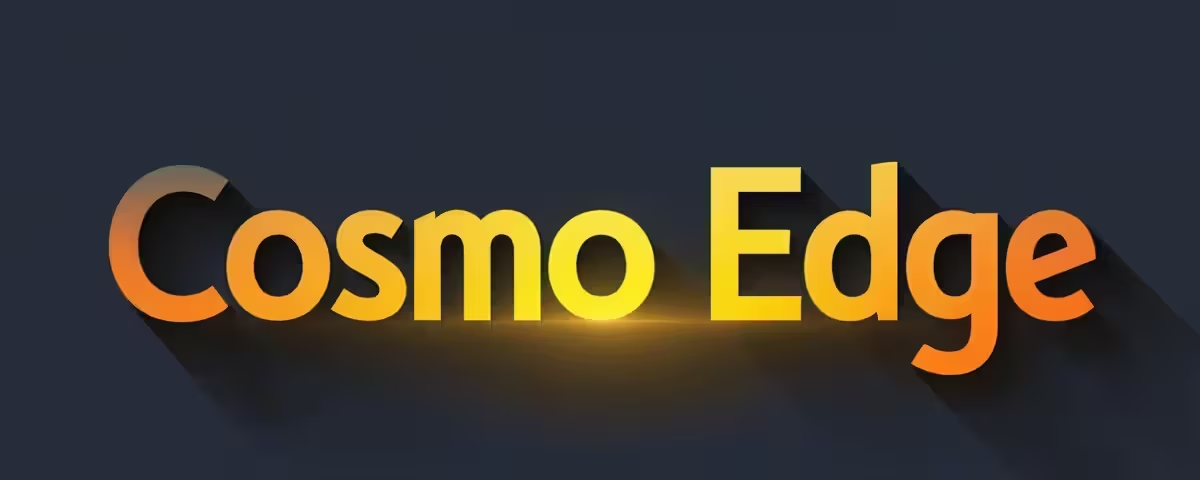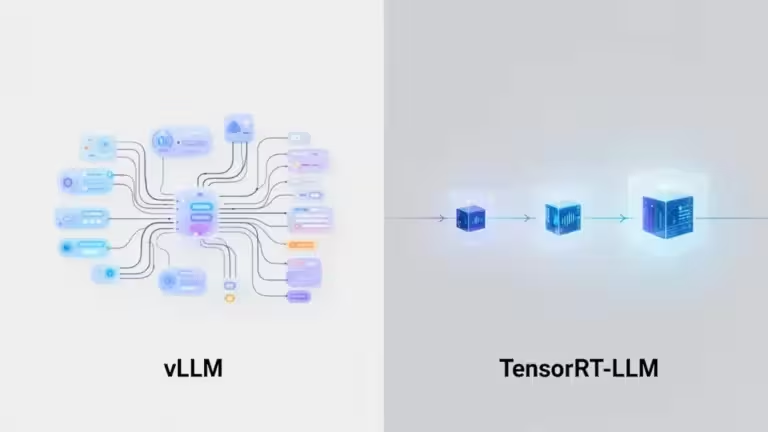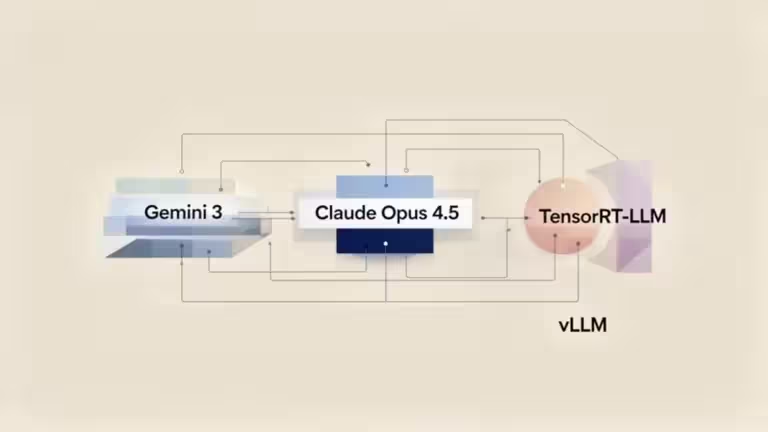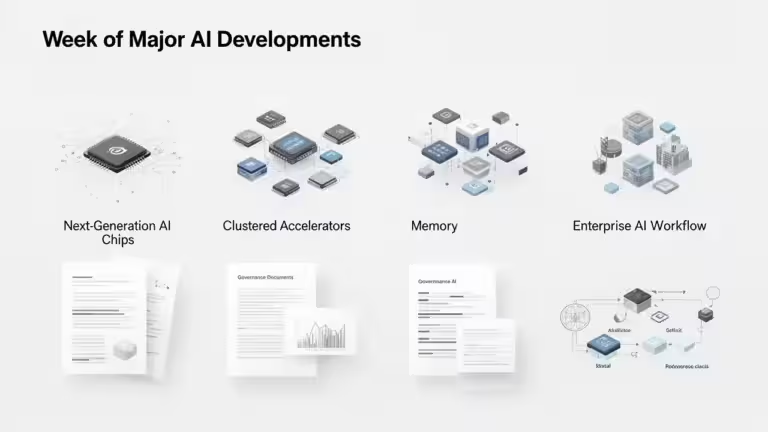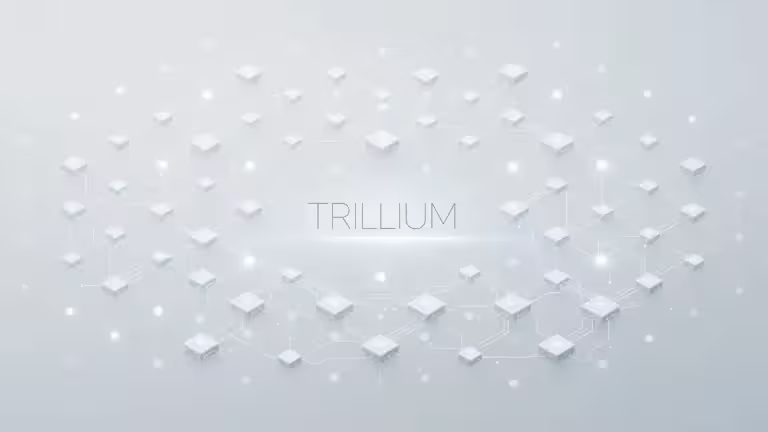Best Open-Source TTS Models in 2025: Free, Multilingual, Realistic Voices
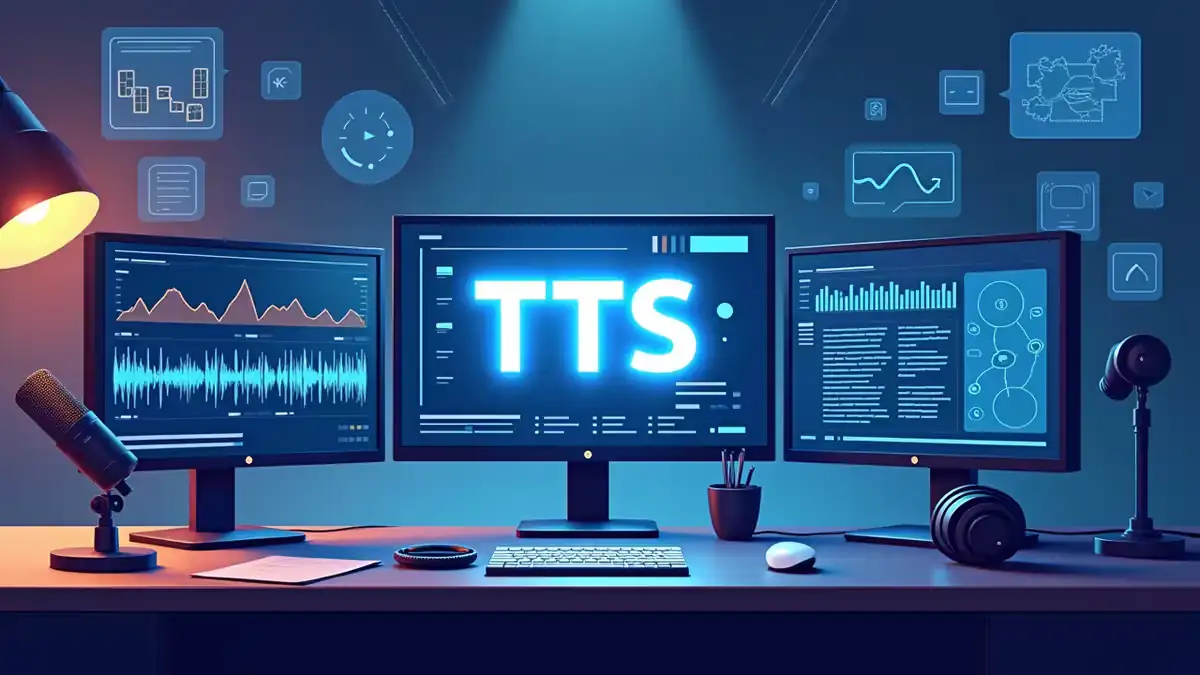
In 2025, open-source TTS models are finally good enough to rival paid services like ElevenLabs. Whether you need realistic voices, instant voice cloning, multilingual support, or fast generation for your app, there is now a free and powerful model for every use case. This guide compares the best open-source TTS models of the year, highlights their strengths and limits, and helps you choose the right one quickly. You’ll also find benchmarks, licensing details, and clear recommendations depending on your project.
What is open-source TTS?
Text-to-Speech (TTS) is the technology that converts written text into synthetic voice. In practice, it turns a sequence of characters into an audio signal that imitates human speech.
Two closely related concepts:
- Text-to-Speech (TTS): conversion aimed at producing a voice that’s as natural and intelligible as possible, used for voice assistants, article narration, or dialogue generation.
- Text-to-Audio (TTA): broader; also includes generating sound effects, alerts, or even music from text.
Today’s open-source TTS models rely on deep learning architectures. Popular ones include Coqui TTS, XTTS-v2, Chatterbox, VITS, the very recent Higgs Audio V2, and newer hybrids inspired by diffusion techniques. These approaches reproduce not only words but also intonation, prosody, and sometimes even emotion. The latest models have advanced a lot here.
Choosing an open-source TTS model brings several advantages:
- Freedom to use and modify.
- Ability to run locally to preserve data privacy.
- Lower costs compared to usage-metered proprietary APIs.
- Large communities that improve, adapt, and fix models.
As with any open-source project, pay close attention to licenses.
History and evolution of open-source TTS models

The story of the best open-source TTS models starts with Mozilla TTS, an initiative within Mozilla to democratize speech synthesis. That project laid the groundwork for Coqui AI, a startup founded by Mozilla alumni such as Eren Gölge, Josh Meyer, Kelly Davis, and Reuben Morais.
Coqui AI quickly became a reference with its Coqui TTS framework, known for voice quality and especially its voice cloning capability. With only 3–10 seconds of audio, you could create a realistic digital voice clone.
But in December 2024, shockwave: Coqui AI announced its shutdown due to an unviable business model. Their paid SaaS services were cut off, leaving many users uncertain. It was a big blow to the speech synthesis ecosystem, comparable to a major cloud provider disappearing.
Fortunately, the open-source community picked up the torch. The Idiap Research Institute forked the original repo and is actively developing it. Multiple channels now exist:
- coqui-ai/TTS: the original repo, no longer maintained (no XTTS-v2).
- idiap/coqui-ai-TTS: the evolving community fork that integrates the top model XTTS-v2.
- The coqui-tts package on PyPI, updated regularly.
While XTTS-v2 earned a strong reputation on the web, a newcomer reshuffles the deck: Higgs Audio V2. Released open source by Boson AI in August 2025. The safetensors file is 11.5 GB, so you’ll want a GPU with 16 GB VRAM (24 GB ideal). That makes it the largest open-source model available. The features? Plenty: emotions, voice cloning, sound effects, music, singing, multi-speaker, real-time translation, and more. It’s the most promising model right now.
In parallel, new players emerged with more specialized models:
- Chatterbox, an open-source alternative directly competing with ElevenLabs, though limited to English for now.
- MeloTTS (MyShell.ai): lightweight and optimized to run on simple CPUs. Six languages and high-quality audio.
- OpenVoice v2, focused on instant voice cloning.
- Kokoro, a compact, ultra-fast model also available on Hugging Face.
- ChatTTS and Dia, designed for dialogue generation.
This diversity shows a vibrant ecosystem: even after a major player disappeared, open-source TTS models keep evolving and multiplying.
How to evaluate an open-source TTS model
Selecting among the best open-source TTS models in 2025 can feel complex. Here are the main criteria to consider:
Voice quality: naturalness and expressiveness
A good model shouldn’t sound robotic. Watch prosody (rhythm and intonation), transitions between words, and the ability to express emotion. Models like XTTS-v2, Higgs Audio V2, and OpenVoice v2 even support style and emotion transfer.
Performance and latency
For real-time usage (voice assistants, games), latency must be very low. Kokoro or Chatterbox offer near-instant generation, whereas others need strong GPUs for acceptable performance.
Multilingual support and accent handling
Global apps need models that handle multiple languages and accents. MeloTTS, Higgs Audio V2, and XTTS-v2 stand out with broad language coverage, while others like ChatTTS remain limited to English and Chinese.
Advanced features
- Voice cloning: crucial for personalization; available with Higgs Audio V2, Coqui TTS, OpenVoice v2, and Chatterbox.
- Multi-speaker dialogue: handled by Dia, Higgs Audio V2, and to a lesser extent ChatTTS.
- Emotion control: OpenVoice, Higgs Audio V2, and Chatterbox let you adjust expressiveness.
Licenses and commercial use
A commonly overlooked point: not all open-source licenses allow commercial use.
- Apache 2.0 / MIT: free use, including commercial (Higgs Audio V2, Kokoro, MeloTTS, OpenVoice, Chatterbox).
- Coqui Public Model License: restricted to non-commercial use (XTTS-v2). Since the company shut down, there’s some uncertainty around the license.
Always verify the license before integrating a TTS model into a professional app.
Coqui TTS and XTTS-v2 – the historical model
If we had to name a pioneer among the best open-source TTS models, it would be Coqui TTS. Born from the Coqui AI team, the framework marked a turning point for open-source speech synthesis by making voice cloning accessible to everyone.
The flagship model, XTTS-v2, remains one of the most impressive solutions available today. It can clone a voice with only 6–10 seconds of audio and generate fluent, expressive speech in 17 languages. It reproduces not only the voice but also the style and emotion of the speaker—yet only via a reference recording for emotion/style. You can’t steer expression via text. A year ago that wasn’t a big drawback; today it’s crucial.
Since the company behind Coqui shut down, things are a bit confusing. The original project coqui-ai/TTS is still on GitHub but unmaintained and doesn’t include XTTS-v2. A community fork idiap/coqui-ai-TTS was created; it evolves constantly and integrates the strongest model XTTS-v2. The coqui-tts package is also on PyPI. XTTS-WebUI is a Python project with a web interface that includes XTTS-v2.
Strengths
- Fast, accurate voice cloning.
- Multilingual, 17 languages: English, French, Spanish, Portuguese, Mandarin, Japanese, etc.
- Expressiveness: emotion handling (anger, joy, sadness) but only via a reference recording (no text steering).
- Performance: <200 ms latency on a high-end GPU.
Limits
- No way to steer expressions via text commands.
- Coqui Public Model License: restricted, non-commercial. License is murky since the company no longer exists.
- With Coqui’s closure at the end of 2024, the model’s future relies entirely on the community.
- Complex installation: many users report hours of setup before getting good results.
For personal, educational, or experimental projects, XTTS-v2 remains a must-know reference. For commercial use, it’s better to consider models with permissive licenses such as Higgs Audio V2, MeloTTS, or OpenVoice.
Higgs Audio V2: the most expressive open-source TTS in 2025
Among the best open-source TTS models, Higgs Audio V2 stands apart. Unlike most speech frameworks, it doesn’t just read text, it understands emotional context and adapts the voice accordingly. Its creators call this “zero-shot expressive speech”: the ability to convey emotion on the very first generation, without a separate emotion model or special training.
Massive, clean training
One key pillar of Higgs Audio is its training corpus, AudioVerse. Where many TTS models rely on noisy data (random YouTube subtitles, poorly annotated podcasts), Higgs Audio V2 uses 10 million hours of filtered, automatically labeled data by in-house models. Each clip is tagged for tone, sound events (laughter, music, sighs), and semantics. The result: a dataset that’s huge yet clean, delivering stable performance in complex scenarios.
Realistic multi-speaker conversations
Where other models simply alternate cloned voices, Higgs Audio V2 goes further. In conversation, voices adapt to each other, sync emotions, and adjust energy in real time. This is a game changer for podcasts, video-game dialogue, and multi-character virtual assistants.
Long-form generation and consistency
A recurring open-source TTS issue is long-term drift: after a few minutes, timbre shifts, intonation flattens, flow degrades. Higgs Audio V2 fixes this. With reference-audio conditioning or prompt instructions, it keeps a consistent voice for 20+ minutes without drift or loss of naturalness.
Superior sound quality
Another difference: audio quality. Most open-source TTS models output 16 kHz, fine for basic listening. Higgs Audio V2 generates at 24 kHz, delivering higher clarity and fidelity you’ll notice on good headphones or speakers—a crucial detail for professional audio creators.
More than TTS: a conversational AI
Built on an architecture akin to large language models (LLMs), Higgs Audio V2 uses an audio tokenizer that processes both semantics (what is said) and acoustics (how it’s said). This dual view produces a voice that’s not just phonetically correct—it feels alive.
Unique features
- Singing and melody: can sustain a melodic line in a cloned voice.
- Voice + music mix: simultaneous narration and ambient soundtrack.
- Voice cloning: possible with a short clip; even multi-speaker from two clips.
In short, Higgs Audio V2 is likely the most expressive and versatile open-source TTS model of 2025. It combines voice cloning, emotional expressiveness, long-form generation, and high audio quality, opening the door to audio dramas, automated podcasts, language learning, and embodied voice assistants.
MeloTTS – lightweight and free
If you need a reliable, fast model that’s commercial-use friendly, MeloTTS deserves a look. Built by MyShell.ai, it’s still widely used today.
Its strength? Multilingual support with varied English accents and natural code-switching between Chinese and English in the same sentence. It’s limited to six languages including French. You’ll find more details on its Hugging Face page.
Strengths
- MIT license: free for all uses, including commercial.
- Optimized for real-time even on CPU. Easy to deploy on a server or app and resource-efficient.
- Multilingual with smooth code-switching.
Limits
- No voice cloning: voices remain generic.
- Less expressive than Higgs Audio V2, XTTS-v2, or OpenVoice.
Ideal where speed and multilingual coverage matter most: chatbots, e-learning, international voice assistants.
OpenVoice v2 – instant, faithful voice cloning
Also from MyShell.ai, OpenVoice v2 targets instant voice cloning. Provide a short audio sample and you get a synthetic voice faithful to the original timbre, usable across multiple languages.
Strengths
- Cross-lingual cloning: a English sample can generate Chinese, French, or Spanish while keeping the same voice.
- Control: emotion, accent, pace, pauses, and intonation.
- MIT license: free for personal and professional use.
Limits
- Narrower language support than MeloTTS.
- Voices may sound slightly less natural.
For projects needing personalization and expressiveness, OpenVoice v2 is one of the best free options. More info on GitHub or Hugging face.
Kokoro – the fast, lightweight gem
In the lightweight open-source TTS category, Kokoro stands out. With just 82M parameters, it delivers surprisingly high audio quality for its size while remaining fast and cost-efficient.
Strengths
- Compact model, ideal for edge deployment (IoT, embedded).
- Apache 2.0 license: commercial-use friendly.
- Fast generation, low resource usage.
Limits
- Limited expressiveness compared to XTTS-v2.
- No built-in voice cloning.
Kokoro is a strong fit for embedded apps, mobile projects, or any scenario needing fast, low-cost speech synthesis. More info on Github or Hugging Face.
ChatTTS and Dia – models specialized for dialogue
ChatTTS
Designed for conversational applications, ChatTTS is trained on 100,000 hours of English and Chinese data. It produces smooth, clear speech but remains limited in languages and emotions.
- Strengths: dialogue specialization, ideal for LLM-based assistants.
- Limits: English and Chinese only, restricted expressiveness, sometimes unstable.
More info on the GitHub page and Hugging Face.
Dia
Developed by Nari Labs, Dia is a 1.6B-parameter model for multi-speaker dialogue generation. Unlike other models, it directly uses tags like [S1] or [S2] to simulate a conversation.
- Strengths: dialogue handling and non-verbal cues (laughter, sighs, coughs).
- Limits: English only; voice may drift without reference audio.
These two models are great for podcasts, audio dramas, or interactive voice interfaces.
Chatterbox – the open-source alternative to ElevenLabs?
Built by Resemble AI, Chatterbox has a clear goal: compete with proprietary solutions like ElevenLabs.
This model is powered by a 500M-parameter LLaMA trained on 500,000 hours of cleaned audio. The result: a voice that’s natural, expressive, and stable.
Strengths
- Voice cloning from a short sample.
- Novel expressiveness control (more or less exaggerated emotion).
- MIT license: commercial-use friendly.
- Low latency (~200 ms).
Limits
- Audio is watermarked by default (PerTh watermarking).
- To get the best expressiveness, you must tune three parameters (CFG, exaggeration, temperature). These aren’t yet enough for precise control.
For projects demanding professional quality without API costs, Chatterbox is a serious contender. You’ll find an online demo on Huggin Face and more details on the GitHub page.
Comparison table of the best open-source TTS models
| Model | License | Voice cloning | Languages | Latency | Recommended use |
|---|---|---|---|---|---|
| XTTS-v2 (Coqui) | Coqui Public License | Yes | 17 | ~200 ms | Personal projects, experimentation |
| MeloTTS | MIT | No | Broad (English + others) | <300 ms CPU | Chatbots, multilingual |
| OpenVoice v2 | MIT | Yes | Medium | <300 ms | Personalized assistants |
| Kokoro | Apache 2.0 | No | English | <200 ms | Edge, mobile |
| ChatTTS | – | No | English, Chinese | ~400 ms | LLM assistants |
| Dia | Apache 2.0 | Partial | English | ~400 ms | Audio dramas, games |
| Chatterbox | MIT | Yes | English + | ~200 ms | Narration, video games |
| Higgs Audio V2 | Apache 2.0 | Yes | Broad, multi-speaker | ~200–300 ms | Podcasts, expressive voice assistants, long-form audio |
Deployment and best practices for using an open-source TTS model
Spinning up a TTS model locally is step one; deploying it to production is another challenge. Several options exist:
- Local: on CPU or GPU—ideal for control and avoiding recurring costs.
- Docker / WSL2: simplifies installation and environment isolation.
- Frameworks like BentoML: turn a TTS model into a scalable API.
Checks:
- Hardware needs (an RTX 3080 GPU is enough for most models).
- Scalability: add servers to handle hundreds of users.
- Security and license compliance (Apache 2.0 and MIT = permissive; Coqui License = restrictions).
TTS models to watch
- VibeVoice : Microsoft released this model in August 2025 in two versions VibeVoice 1.5B and VibeVoice 7B. On benchmarks, it outperforms proprietary solutions like Elevelabs V3 and Gemini 2.5 Pro according to Medium. It’s very capable and supports up to four speakers. However, it’s intended for research and development, not production. To limit misuse, Microsoft adds a watermark and an audio announcement, “This segment was generated by AI”, to the file. Note that VibeVoice is currently limited to English and Chinese.
- Maya1 is an open-source 3-billion-parameter text-to-speech model released in November 2025, capable of generating expressive speech controlled through text and emotion tags, but currently limited to English only. Independent testing shows inconsistent real-world performance: emotion tags such as
<sigh>,<whisper>, and<sing>are often ignored, timing is disrupted by unnatural pauses, and overall quality varies widely, with subtle emotions rarely reproduced. Despite these limitations, Maya1 offers strong technical advantages, including extremely low operating costs, the ability to run on a single 16 GB+ GPU, and an efficient architecture that predicts SNAC tokens instead of full waveforms.
Community feedback has been mixed, with early enthusiasm giving way to disappointment due to the gap between marketing claims and actual output, and some users even reporting inference issues where the generated speech does not follow the provided text. The model is suitable for simple narration, character voices with limited emotional range, or prototypes where cost matters more than quality, but it is not yet appropriate for professional use cases requiring stable emotional delivery, reliable nuance, or proprietary-level performance comparable to ElevenLabs.
Conclusion
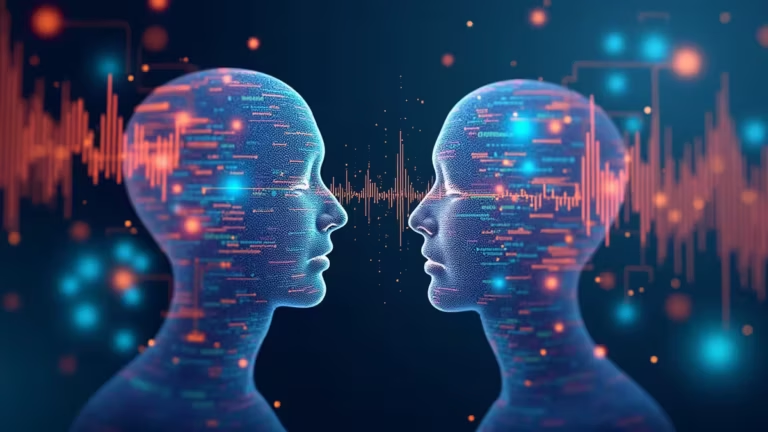
In 2025, the best open-source TTS models now cover nearly all speech synthesis needs: from lightweight multilingual with MeloTTS and instant voice cloning with OpenVoice v2, to the speed and efficiency of Kokoro and the pro-grade quality of Chatterbox.
The arrival of Higgs Audio V2 marks a decisive step. While many models still struggle with expressiveness and long-form coherence, Higgs stands out with zero-shot emotion, realistic multi-speaker ability, and 24 kHz audio quality. For podcasts, audio drama, or expressive voice assistants, it’s a major leap forward.
The choice of the best open-source TTS model depends on your goal:
- prioritize polyglossia and simplicity (MeloTTS),
- personalization with cloning (OpenVoice v2, Chatterbox, XTTS-v2),
- embedded performance (Kokoro),
- or expressive richness and long-form coherence (Higgs Audio V2).
One thing is certain: thanks to this diversity and an engaged community, open-source speech synthesis has never been closer to matching—or even surpassing—proprietary services. That said, open-source projects do require some technical know-how or a healthy dose of curiosity. It’s the price to pay for highly customizable tools.
FAQ: everything about the best open-source TTS models in 2025
What’s the best open-source TTS model in 2025?
There isn’t a single “best” model—pick based on your needs. MeloTTS is ideal for multilingual coverage and simplicity, OpenVoice v2 for voice cloning, Kokoro for speed and efficiency, Chatterbox for quality close to proprietary options, and Higgs Audio V2 if you want an expressive model that stays coherent on long formats.
What does Higgs Audio V2 bring vs. other TTS models?
Higgs Audio V2 stands out for zero-shot emotion, natural multi-speaker conversations, and 24 kHz sound quality. It’s especially suited to podcasts, expressive assistants, and long-form narrative content.
Can you clone a voice with an open-source TTS model?
Yes. XTTS-v2 (Coqui), OpenVoice v2, Chatterbox, and Higgs Audio V2 can clone a voice from a short audio clip. Some—like Higgs Audio—can even manage multiple voices in the same dialogue.
Are open-source TTS models suitable for commercial use?
It depends on the license. Higgs Audio V2, MeloTTS, OpenVoice v2, Kokoro, and Chatterbox use MIT or Apache 2.0, so they’re commercial-use friendly. XTTS-v2, however, is restricted to non-commercial use (Coqui Public License).
What hardware do I need to run these models?
- CPU-only: MeloTTS runs well even without a GPU.
- Mid-range GPU (RTX 3060–3080): enough for OpenVoice v2, Kokoro, XTTS-v2.
- High-end GPU (RTX 4090 and similar): recommended for heavy models like Higgs Audio V2 or Chatterbox if you target real-time and multi-speaker.
How do open-source TTS models compare to proprietary services like ElevenLabs?
Proprietary services are easier to use and stable via API, but they’re paid and closed. Open-source TTS models take more setup and maintenance, but offer freedom, customization, and data privacy.
Is it legal to use a cloned voice with TTS?
Cloning a voice without consent can raise legal issues. For personal use, it may be tolerated; for commercial exploitation, always obtain rights or permission from the person concerned.
Your comments enrich our articles, so don’t hesitate to share your thoughts! Sharing on social media helps us a lot. Thank you for your support!
